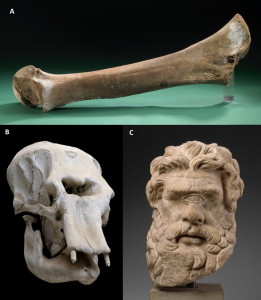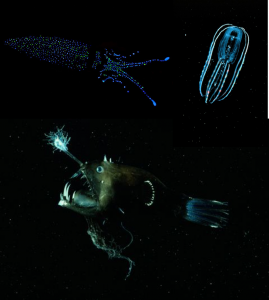Guest Author: Emily Green
Bristol Palaeontology MSci Graduate / PhD Student – University of Lincoln
Dragons seem a universal staple of global mythology. Large and fearsome beasts which are so often, in part, based on unexplainable fossil discoveries. Many mythical creatures began life this way, such as the cyclops of Ancient Greece from the skulls of extinct island elephants, or mythical giants found by Carthaginians during excavations which are more likely the limb bones of Mammoths. In creating these myths, these civilisations were trying to explain their amazing discoveries. Now, as palaeontologists, we have a plethora of tools to explain the history of these fantastical beasts, which are sadly far more mundane than the flying fire breathing fiends of popular fantasy.

Biology puts many constraints in the way of creating some of the dragons more fantastical adaptations. But, using all the tools in our biological toolbox, we can piece together a story using clues from the evolution of other animals. So, if dragons were to exist under the rules and regulations of evolution, what would they be like?
Dragons feature almost globally in religion, myth, and legend. This cosmopolitan distribution can be achieved in many ways; either as birds by flight between far flung continents, as fish by swimming between oceans (or dropped off in many different lakes by careless birds), or by rafting events such as those undertaken by monkeys in the Paleogene to reach South America (or see the more recently the voyages of black rats on human vessels around the world).
Equally they could have achieved this distribution by simply travelling across land when the continents were all stuck together. The last such time was at a time dinosaurs roamed the earth, in the Mesozoic era, when the supercontinent Pangea existed.
We still see remnants from this time in the distribution of organisms today, such as the Gondwanan Floral Belt, where many modern Southern continents which made up a supercontinent called Gondwana now share closely related species of plants, despite their far flung geographical separation.
Diversity remains an important tool for palaeontologists. Working out how the distribution of an organism was achieved gives us some insight into how it evolves. For example, the giant flightless bird group known as the ratites (see ostriches, kiwis, and emus), have a wide geographical range between Africa and Australia. Thanks to paleogeography and molecular trees using genes, we know that ratites travelled to Australia from Africa by flying, likely across the land bridge of Antarctica before it was todays frozen tundra, and lost the ability to fly and became giant independently after they migrated (Mitchell et al., 2014).
For dragons at least, they almost universally seem to posses the ability to fly, or in many cases swim, and so a world-wide population seems easily achievable, in the way that birds or fish have spread globally.
Dragons also represent great disparity in their forms. Disparity is the variation between organisms, most notably in shape, size, and even behaviour. The most commonly depicted forms of dragons in mythology are reptilian in appearance. European myths show them having wings, though they more often go without in Asian mythology, and sometimes have no limbs at all, like in the legends of large sea serpents. These are all body forms present in modern day tetrapods (four limbed vertebrates). This group evolved at the onset of terrestrialisation in the late Devonian, where lobe finned fish, similar to today’s coelacanths, slowly moved from the sea onto land, developing 4 limbs from their fins, to help them get around.
One of the enduring myths of the dragon is their ability to fly. Most easily explained by evolution of wings. Powered flight has evolved many different times in tetrapods, notably in pterosaurs, birds, and bats, which all adapted their forelimb bones and muscles for powerful flapping and gliding. The modern fantasy depictions of dragons like in ‘How to Train Your Dragon’ (or even the Welsh flag), where the dragons have four limbs AND wings, are entirely improbable. Notably because in every other vertebrate species that has evolved wings, they have done so by modifying their fore limbs. To still have four limbs with fore limbs intact AND a set of wings, would require the dragon to start with 6 limbs, which is not something we see in vertebrates, as the four limb pattern is very heavily controlled by body planning genes (HOX genes).
To fly requires you to be very light, as so dragons would have to have very light skeletons, like modern birds which have hollow bones. Their massive size is a consideration too. Many of the largest birds are now flightless, having become large enough to deter predators due to their size, but still retained their wings for display purposes (though these are more vestigial in some species like the kiwi). So, whether dragons fly would likely be dependent on their size.
Like birds too, some dragons have gone back to the oceans. Returning to the water has happened many times in evolution; with the return of cetaceans (whales and dolphins) to the waters well as marine reptiles such as Mosasaurs and Ichthyosaurs; the Mesozoic’s more terrifying answer to a dolphin. This four-limb pattern is often modified for flippers to aid swimming in the water, though some have even gone so far as the lose limbs all together, such as whales losing their hind limbs relying on just their tail for propulsion. The sea dragons’ loss of limbs may have been to gain a more hydrodynamic body shape and to aid swimming, likely in an eel-like fashion.
One of the more fantastical components of dragon mythology is their ability to breath fire. Fire would likely be used as a predation tool, or predation deterrent, part of an ecological arms race to outdo competitors. As far as we know, no organism alive possess this remarkable ability.
Actual fire breathing poses many evolutionary difficulties; requiring the need for fire retardant insides, means of generating a spark, and the production of highly flammable gases or chemicals. The other issue that comes with fire breathing is the logistics of aim. You are far more likely to be subject to natural selection AGAINST fire breathing by accidentally set yourself on fire before managing to reproduce.
Though if we really wanted something more akin to fire, what would evolution come up with? Other species have developed long range deadly attacks by becoming venomous, like wood ants, flinging formic acid when threatened to defend the colony. Or if we wanted the flashy approach, we’d be looking at creating light through bioluminescence. This is used for a plethora of things in the animal world, squid sometimes employ this as counter-camouflage, fireflies use it to attract mates, and angler fish to lure in a tasty bite.

One of the famous parts of European dragon mythology is their large hoard of gold and jewels. This made them a very attractive myth for the medieval knight looking to score some bounty in a get rich quick scheme, which either paid off very well, or led to a nice snack for the dragon.
Hoarding behaviours is quite common in the animal kingdom, but is very varied in terms of reason. Animals like hamster or squirrels tend to hoard food for hard times. This is unlikely the case for dragons here, as treasure possesses little nutritional value, the very large and pointy teeth and penchant for fighting wayward knights would suggests a highly carnivorous diet. Amusingly many of the perpetrated ‘dragon teeth’ discovered in Asia were actually ancient horse teeth, so often anatomy and myth do not overlap.
This behaviour of collecting and hoarding objects is also exhibited by many other creatures across the animal kingdom usually as ways to attract mates. This could be prime territory as in deer or grouse, or by the creation of a fantastically decorated mating arenas to demonstrate prowess and fitness, as in Bower birds, cichlids, or Gentoo penguins.

So, what have we garnered from all this about dragons? Due to their depicted reptilian nature, they would likely be archosaurs, close relatives to crocodiles, dinosaurs, and birds, and probably had their origins way back in the Permian, when the major lineage between the mammals and the reptiles split. Dragons probably achieved their global distribution before the split of the supercontinent Pangea in the Cretaceous period. They don’t breathe fire, but they can fly, like birds and bats. Some are even secondarily aquatic, like whales, returning to the sea and gaining and smoother streamlined body forms. Their long and sharp teeth show that they are carnivorous, as in modern predators like lions, tigers, and bears (oh my!). And some hoard gold, likely a behaviour to attract mates.
This comparative biology can help us understand a lot about creatures that no longer exist during this time, something common place in palaeontology. Sadly while dragons are non-existent, all the methods used here with a bit of imagination are the very same we apply to the very much real, dinosaurs, mammoths, and pterosaurs, to understand what they were like, and how they lived.
References
Mitchell, K. J. et al. (2014) ‘Ancient DNA reveals elephant birds and kiwi are sister taxa and clarifies ratite bird evolution’, Science. American Association for the Advancement of Science, 344, 898–900
Emily Green graduated from the University of Bristol in 2019 with a Masters degree in Palaeontology & Evolution. She is now a PhD student at the University of Lincoln researching biological complexity, on a project funded by the John Templeton foundation.
Edited by Rhys Charles

